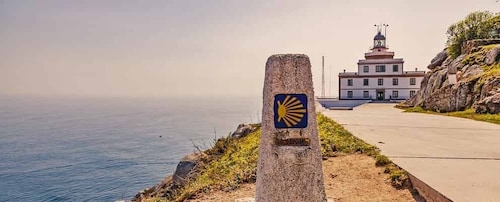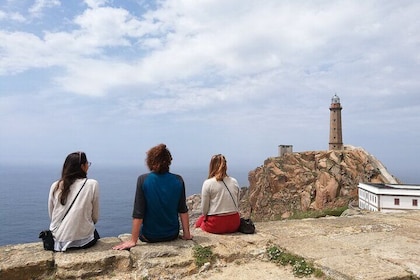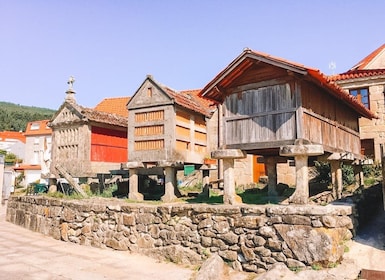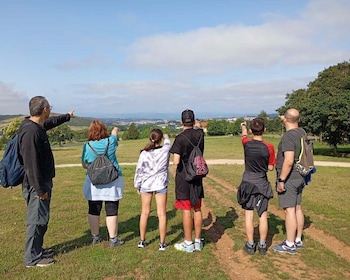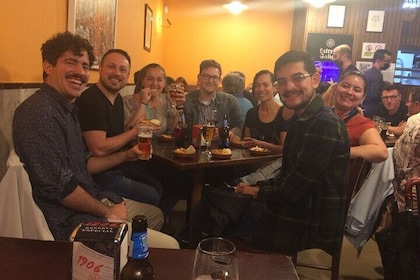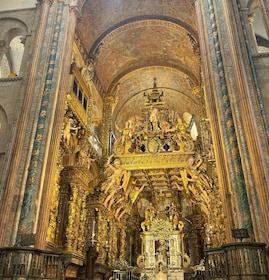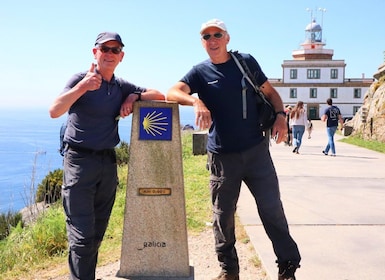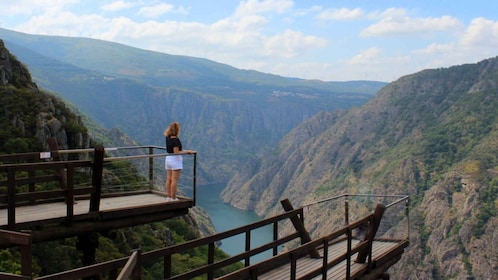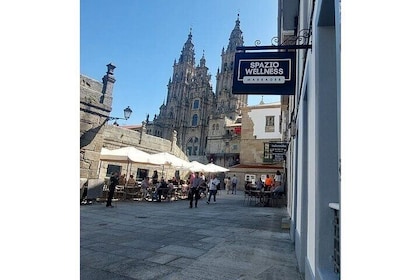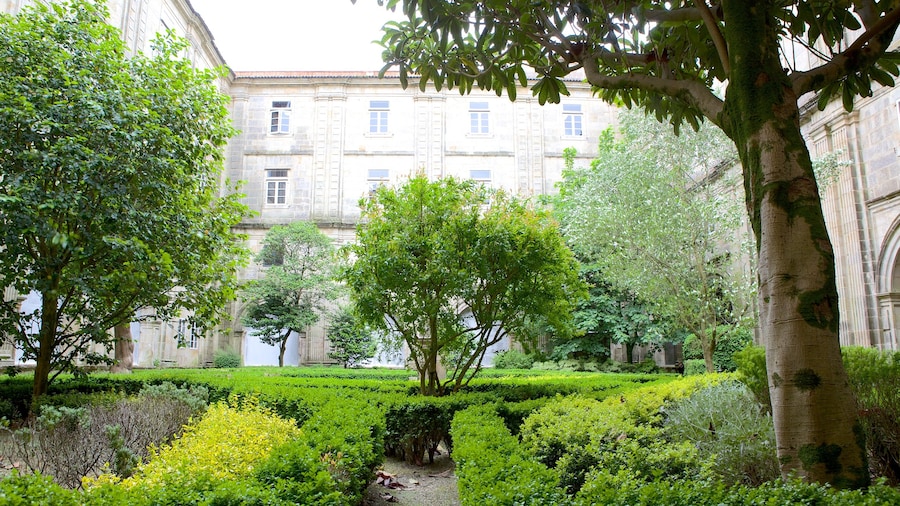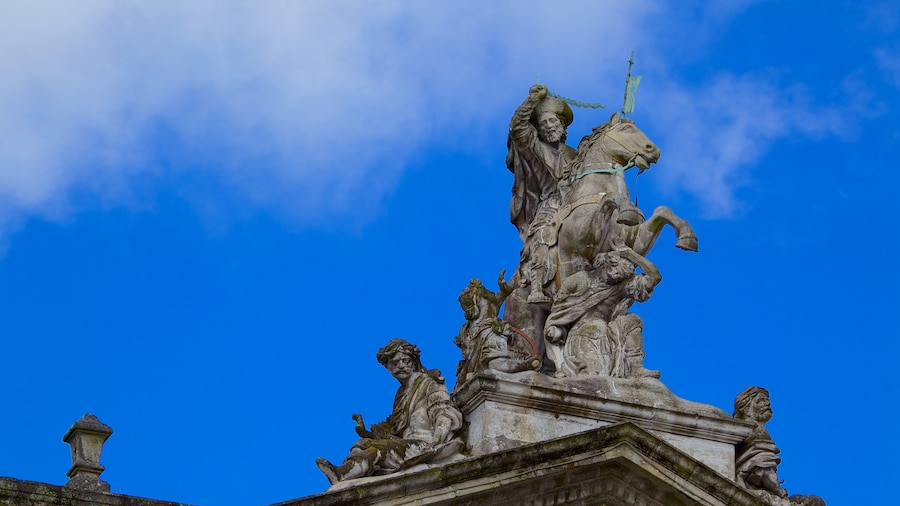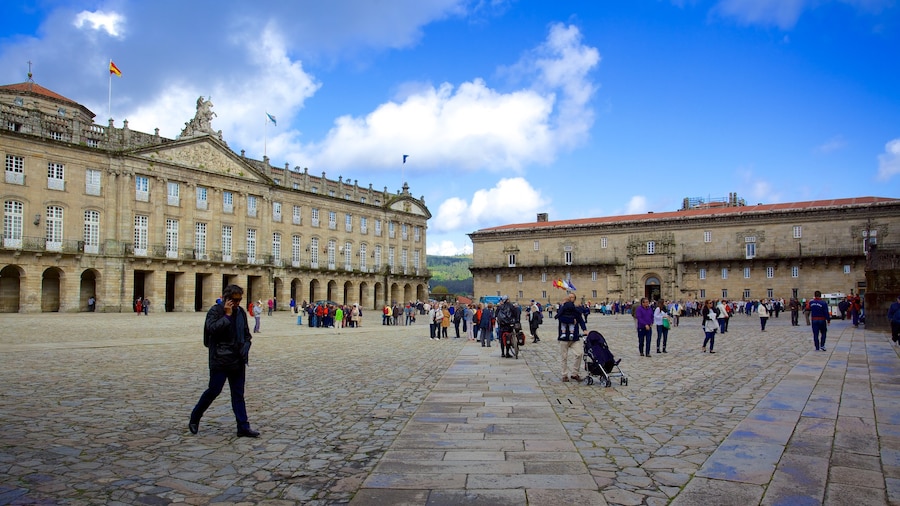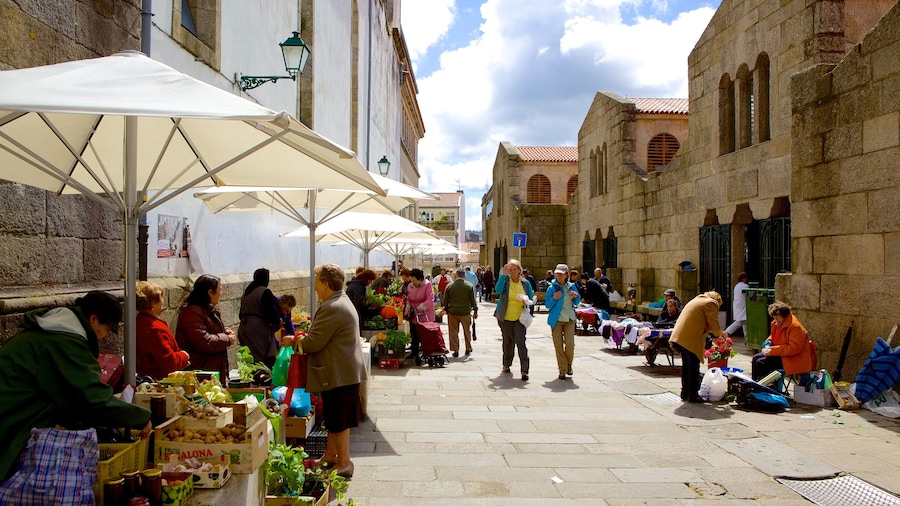Santiago de Compostela’s second-largest square is an intriguing place to stop for a coffee and watch people of the city go about their daily activities.
Plaza de la Quintana is a large, two-level square bordering the iconic Santiago de Compostela Cathedral. Have a seat at one of the cafés lining the square and listen to street musicians perform or watch students chatting on the grand staircase.
This busy square is sometimes known as Quintana de los Muertos (Square of the Dead) because it was constructed over a former city cemetery. Look down and you’ll see the square is paved with granite, a rock often used in Galician architecture.
The west side of the square is dominated by the gorgeous Santiago de Compostela Cathedral. From the square, look for the cathedral’s Holy Door and Royal Gate. This special entrance is opened only on Compostelan Holy Years, which is when July 25 (St. James' Day) falls on a Sunday.
Stop by the square at night to see what appears to be the figure of a pilgrim standing under the cathedral’s Baroque clock tower. Look closer and you’ll notice that the pilgrim is actually just a shadow cast by the cathedral. According to local legend, this shadow-pilgrim is a priest who disguised himself to meet his lover, a nun at the nearby convent. His lover never came and thus the pilgrim is said to return every night, hoping he’ll find her.
Walk up the Quintana Stairs, which stretch between the rear of the cathedral and convent. These broad steps are a popular place for local students to gather. Find a spot on the steps to sit and look across the square toward Casa de los Canónigos. Built between the 17th and 18th centuries, this imposing building was once the home of the cathedral’s canons.
On the east side of the square you’ll find the Monasterio de San Paio Antealtares, one of the oldest buildings in the city. Note its sombre façade. It was designed in an intentionally restrained style to prevent the building from overshadowing the original Church of St. James nearby.
Plaza de la Quintana is located on the eastern side of Santiago de Compostela Cathedral, within walking distance of Plaza de la Azabachería and Plaza del Obradoiro.





